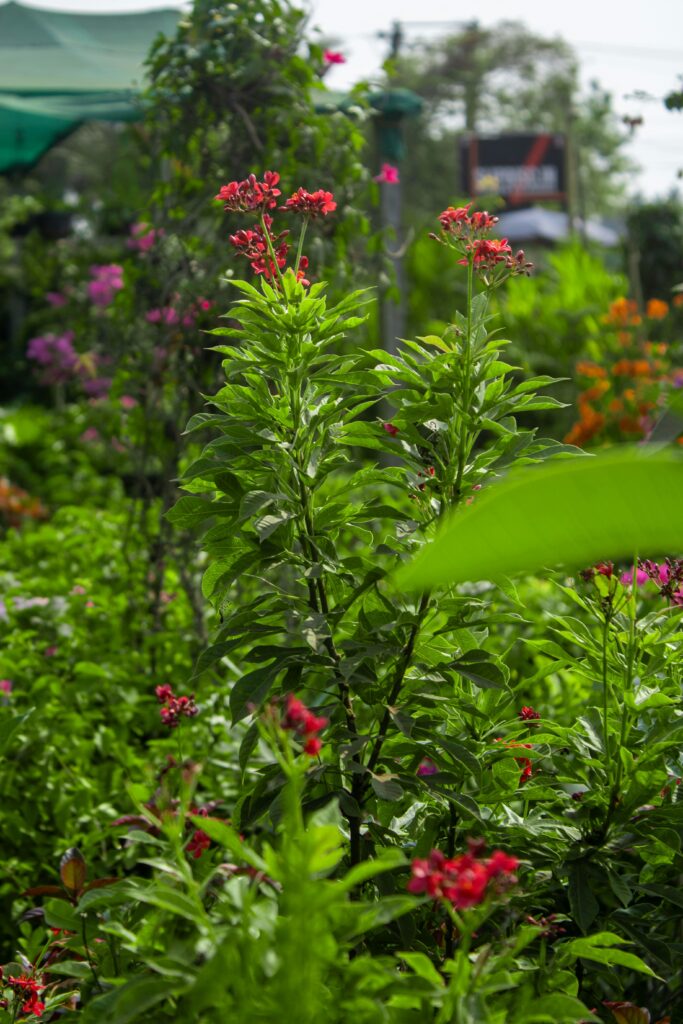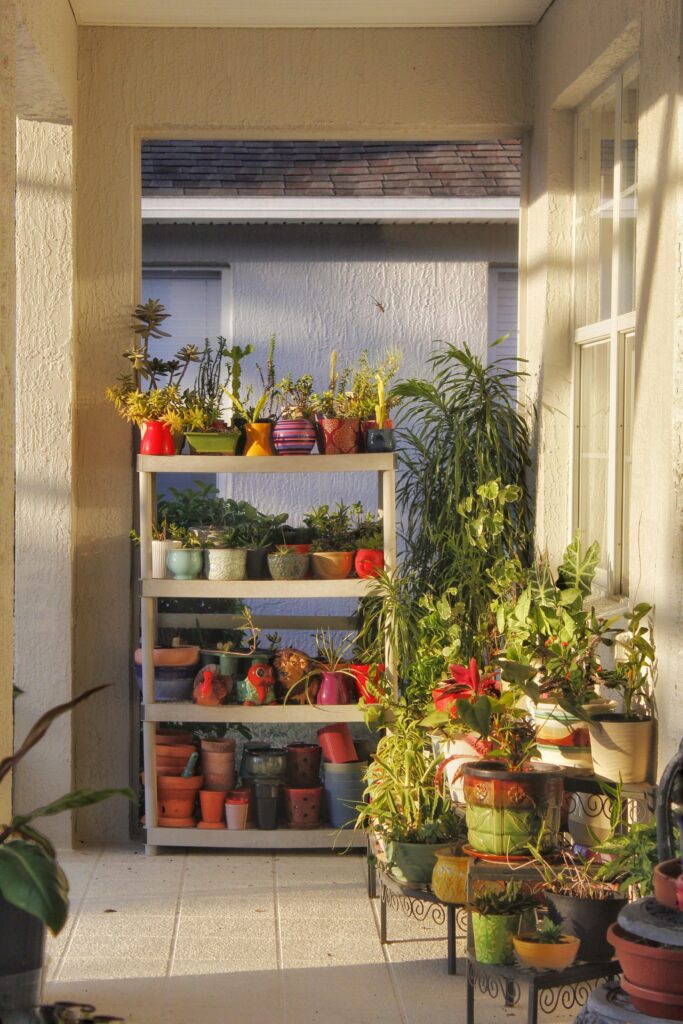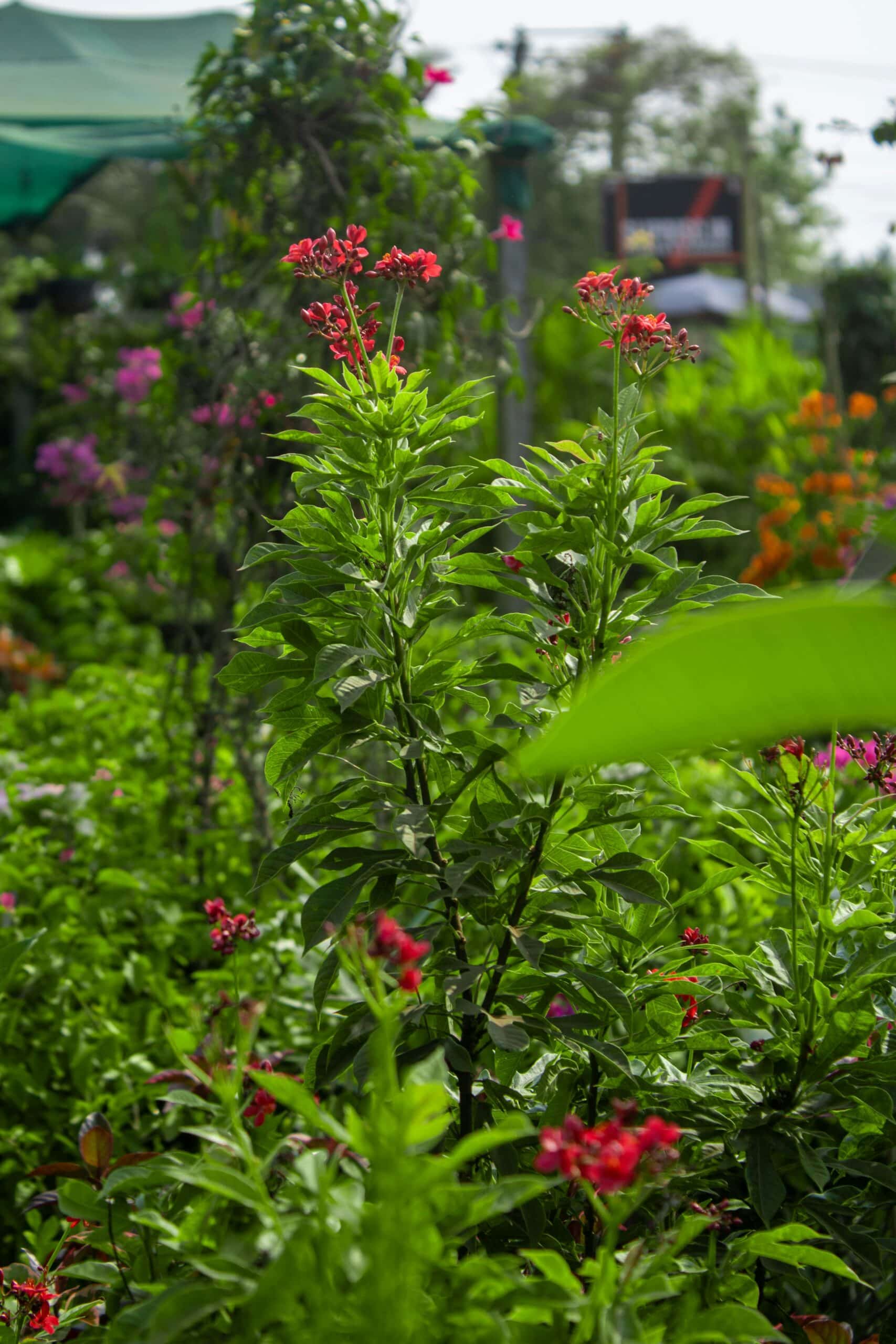Anúncios
🌿🌸

The desire to add a touch of nature to our living spaces is a shared feeling among many, especially those residing in compact urban areas. However, the challenge often lies in the lack of sufficient room to nurture a traditional garden. That’s where vertical gardening comes in – a green solution that not only adds beauty and freshness to your surroundings but is also a fantastic way to make the most of limited spaces.
Anúncios
In this comprehensive guide, we’ll dive deep into the world of vertical gardening, specifically focusing on the best plants for vertical gardens in small spaces. These plant suggestions, carefully curated by experts, are guaranteed to thrive in a vertical setup, bringing your walls to life with vibrant green foliage and colorful blossoms.
Furthermore, we’ll share a series of vertical growing tips to ensure your garden not only flourishes but also remains healthy and robust in the long run. Whether you’re a seasoned gardener looking to try something new or a beginner searching for ways to green up your home, this guide is certain to provide valuable insights and inspiration.
Anúncios
So let’s embark on this green journey and discover how to transform your small spaces into vertical green wonders.🍃🌼🌱
🌿 Identifying the Best Plants for Vertical Gardens
Choosing the right plants is the cornerstone of a successful vertical garden. In limited-space environments—such as balconies, patios, or indoor walls—plant selection becomes a strategic decision that balances aesthetic appeal, maintenance needs, light conditions, and growth habits. Whether your garden’s goal is culinary, decorative, or ecological, there’s a wide palette of plant species ready to thrive vertically.
Let’s begin with one of the most versatile and space-efficient categories: herbs.
🌱 Herbs: Flavorful, Functional, and Space-Savvy
Herbs are ideal for vertical gardens due to their compact root systems, relatively shallow soil requirements, and culinary value. Most herbs are also fast-growing and can be harvested regularly, which keeps them from overcrowding their space. Here are some top-performing herbs for vertical setups:
🌿 Basil (Ocimum basilicum)
Ideal Conditions:
- Light: Full sun (6–8 hours/day)
- Soil: Well-draining, nutrient-rich
- Water: Moderate; allow soil to dry slightly between waterings
Why It’s Great for Vertical Gardens:
- Compact and fast-growing
- Variety of types (Genovese, Thai, Lemon) add flavor and color
- Frequent harvesting promotes bushier growth
- Ideal for kitchen-adjacent walls or balcony planters
🔪 Bonus: Fresh basil elevates everything from pasta to cocktails.
🌿 Thyme (Thymus vulgaris)
Ideal Conditions:
- Light: Full sun
- Soil: Sandy, well-draining
- Water: Low; drought-tolerant once established
Why It’s Great for Vertical Gardens:
- Low-maintenance and cold-hardy
- Spreads slowly and stays compact
- Great for hanging pockets or shallow containers
- Fragrant foliage adds sensory appeal
🍽️ Tip: Combine with oregano and rosemary for a Mediterranean herb wall.
🌿 Rosemary (Rosmarinus officinalis)
Ideal Conditions:
- Light: Full sun (8+ hours)
- Soil: Sandy, well-draining
- Water: Low to moderate
Why It’s Great for Vertical Gardens:
- Upright or trailing varieties available
- Evergreen; offers year-round harvest
- Adds height and structure to your garden
- Pairs beautifully with ornamental flowers or citrus
🌬️ Fun Fact: Acts as a natural air freshener and insect repellent.
🌿 Mint (Mentha spp.)
Ideal Conditions:
- Light: Partial shade to full sun
- Soil: Moist, loamy
- Water: High; prefers consistently moist conditions
Why It’s Great for Vertical Gardens:
- Fast-growing and vigorous (even invasive)
- Excellent filler plant for lower sections or hanging pouches
- Offers refreshing scent and flavor for teas, salads, and desserts
⚠️ Caution: Plant mint in a contained section or isolated pocket to prevent it from overtaking neighboring plants.
🧪 Herb Garden Design Tips
- Group by needs: Keep moisture-loving herbs like mint and parsley separate from drought-tolerant varieties like thyme and rosemary.
- Use a tiered structure: Place sun-loving herbs higher and partial-shade herbs lower if sunlight varies.
- Harvest frequently: Regular pruning keeps herbs healthy and compact, avoiding overcrowding.
Vegetables
Certain types of vegetables are also suitable for vertical gardens. These include climbing plants like beans and peas, and compact plants such as lettuce and spinach.
- Beans: Runner beans and pole beans can climb up the vertical space, thus maximizing utilization. They need full sun exposure and well-drained soil.
- Peas: Peas are also climbers and can easily adapt to a vertical garden. They prefer cooler weather, making them a great option for spring and fall gardens.
- Lettuce: Lettuce is a compact plant that can thrive in small spaces. It prefers cooler temperatures and can tolerate partial shade.
- Spinach: Similar to lettuce, spinach is a compact plant that grows well in cooler weather and can tolerate partial shade.
🌿 Effective Vertical Garden Design
Creating a successful vertical garden is both an art and a science. Beyond selecting the right plants, careful attention must be given to the design elements that dictate how your garden functions, thrives, and visually impacts the space it inhabits. From the choice of structure to plant positioning and aesthetic integration, every decision contributes to the efficiency, beauty, and longevity of your vertical garden.
🧱 Choosing the Right Structure
The framework of your vertical garden serves as the backbone for both plant support and design coherence. A well-chosen structure ensures durability, accessibility, and harmony with your space and gardening goals.
Trellises
Trellises are classic vertical solutions ideal for vining or climbing plants like:
- Beans
- Peas
- Tomatoes
- Cucumbers
- Passionflower
Benefits:
- Provides vertical support and direction for upward growth
- Easy to install on walls, balconies, or fences
- Enhances airflow, reducing risk of disease
Tip: Opt for metal or treated wood trellises for durability, and position them in sunny areas where climbing plants will flourish.
Planters
Wall-mounted planters, modular containers, or hanging baskets are perfect for herbs, leafy greens, and compact vegetables like:
- Basil
- Lettuce
- Strawberries
- Spinach
- Radishes
Benefits:
- Great for small spaces, balconies, and indoor settings
- Modular systems allow easy replacement and rotation of plants
- Can be equipped with drip irrigation or self-watering features
Tip: Choose lightweight, breathable materials like resin or coir for indoor use, and ensure adequate drainage.
Pallets
Recycled wooden pallets are an eco-friendly, cost-effective, and visually rustic option for creating vertical gardens.
Benefits:
- Naturally divided spaces work well for herbs, succulents, and flowers
- Can be mounted vertically or leaned against a wall
- Ideal for DIY projects and beginner gardeners
Tip: Sand, treat, and line pallets with landscape fabric to prevent soil loss and prolong the wood’s life.
🌞 Strategic Plant Positioning
Proper plant placement enhances visual appeal, accessibility, and plant health.
- Sun-loving plants should be placed at the top of the structure to receive full exposure.
- Shade-tolerant species (e.g., ferns, mint, calatheas) should occupy the lower levels.
- Group plants by water and nutrient needs to streamline maintenance and irrigation zones.
- Mix trailing, upright, and filler plants to create layered depth and dynamic texture.
Design Tips:
- Use color theory: Combine contrasting or complementary foliage for visual impact.
- Think in tiers: Position taller plants toward the top, medium in the center, and cascading varieties at the bottom for balance and ease of care.
- Incorporate symmetry or natural asymmetry depending on whether you want a structured or organic look.
🎨 Integrating Style with Functionality
Vertical gardens are not just practical—they’re powerful design features. Whether you’re working with a rustic balcony, a minimalist interior, or a vibrant patio, your structure and plant layout should align with your décor preferences.
- Use sleek, geometric frames for a modern aesthetic
- Repurpose antique ladders or crates for a vintage charm
- Add LED grow lights or fairy lights for night-time ambiance
Oregano: A Hardy Herb for Vertical Gardens
Oregano is a robust and aromatic herb that thrives in vertical garden environments, particularly those with ample sunlight and well-drained soil. Known for its culinary versatility and drought resistance, oregano is an ideal choice for top-tier vertical planters where water may drain quickly. Its compact growth habit and woody stems make it easy to maintain, while frequent harvesting encourages fuller, bushier plants. This perennial herb pairs well with basil and thyme in a culinary-themed green wall, offering both visual appeal and year-round flavor. Plus, its pungent scent can help deter certain pests naturally in your garden.
Positioning the Plants
The positioning of the plants in a vertical garden is also crucial for maximizing space. The placement should consider the plants’ growth habits, light requirements, and watering needs. For instance, taller plants that need more sunlight should be placed at the top, while smaller plants that can tolerate some shade can be positioned lower.

Tips for Maintaining a Vertical Garden
Maintaining a vertical garden may present unique challenges compared to traditional gardening, but with thoughtful care and the right strategies, it can be incredibly rewarding. The vertical orientation of these gardens requires special attention to watering, fertilization, pruning, and overall structural health. Proper maintenance ensures your green wall remains lush, vibrant, and productive year-round—whether you’re growing ornamentals, edibles, or a mix of both.
💧 Watering
Watering is one of the most critical aspects of vertical garden maintenance, and it requires precision due to the gravitational flow of water. In vertical arrangements, lower levels tend to get oversaturated, while upper tiers may remain underwatered, leading to uneven plant health.
Best Practice: Drip Irrigation System
A drip irrigation system is ideal for vertical gardens because it:
- Delivers water directly to each plant’s root zone, minimizing waste.
- Ensures uniform hydration across all levels.
- Can be connected to automated timers or smart irrigation systems for added convenience.
Additional Tips:
- Check soil moisture regularly, especially in upper and middle tiers.
- Avoid overwatering; ensure your setup includes adequate drainage trays or channels to prevent waterlogging and wall damage.
- For smaller setups, self-watering planters or capillary mats can offer low-maintenance alternatives.
🌿 Fertilization
Vertical gardens often have limited soil volume, meaning nutrients are depleted more quickly than in-ground gardens. Consistent fertilization is essential to support healthy growth, vibrant foliage, and flowering or fruiting success.
Tips for Effective Fertilization:
- Use a balanced, slow-release fertilizer tailored to your plant types (e.g., a nitrogen-rich formula for leafy greens, or bloom boosters for flowers).
- For quicker results, liquid organic fertilizers can be applied via foliar spray or diluted into the irrigation system.
- Apply fertilizer during the active growing season (typically spring and summer) and reduce frequency in dormant months.
- Monitor plants for nutrient deficiency symptoms, such as yellowing leaves or stunted growth, and adjust feeding accordingly.
✂️ Additional Maintenance Tips
Inspect mounting structures periodically to ensure they remain secure, especially after heavy watering or strong winds (in outdoor installations).
Prune regularly to prevent overcrowding, improve air circulation, and maintain the desired shape and size of plants.
Rotate plants if possible, to ensure even light exposure, especially in indoor setups.
Check for pests like aphids, mealybugs, or spider mites, particularly in tight foliage clusters. Use natural remedies or neem oil to manage infestations.
Conclusion
“Grow Up: Discover the Best Plants for Vertical Gardens in Small Spaces – Maximize Your Space with These Vertical Growing Tips!” provides an invaluable guide for those yearning to transform their limited spaces into lush, green havens. It not only highlights the beauty and benefits of vertical gardening but also offers practical and innovative ideas to put into practice. Indeed, going vertical is a creative solution to space limitations, and the perfect way to bring nature closer, even in the heart of urban settings.
The article introduces us to a range of plants ideal for vertical gardens, which can thrive despite the constraints. From vining plants like ivy and tomatoes to foliage plants like ferns, the options are vast and versatile. 🌿 It goes further to provide vital tips on how to care for these vertical gardens to ensure their healthy growth and sustainability.
Above all, the article underscores the importance of being patient, consistent, and willing to learn, as gardening is a journey of discovery. So, whether you’re a seasoned gardener or a green thumb in the making, this article offers you the inspiration and information you need to maximize your space and embrace the joys of vertical gardening. 🌱
So, let’s grow up, literally, and fill our small spaces with thriving, vertical gardens.

